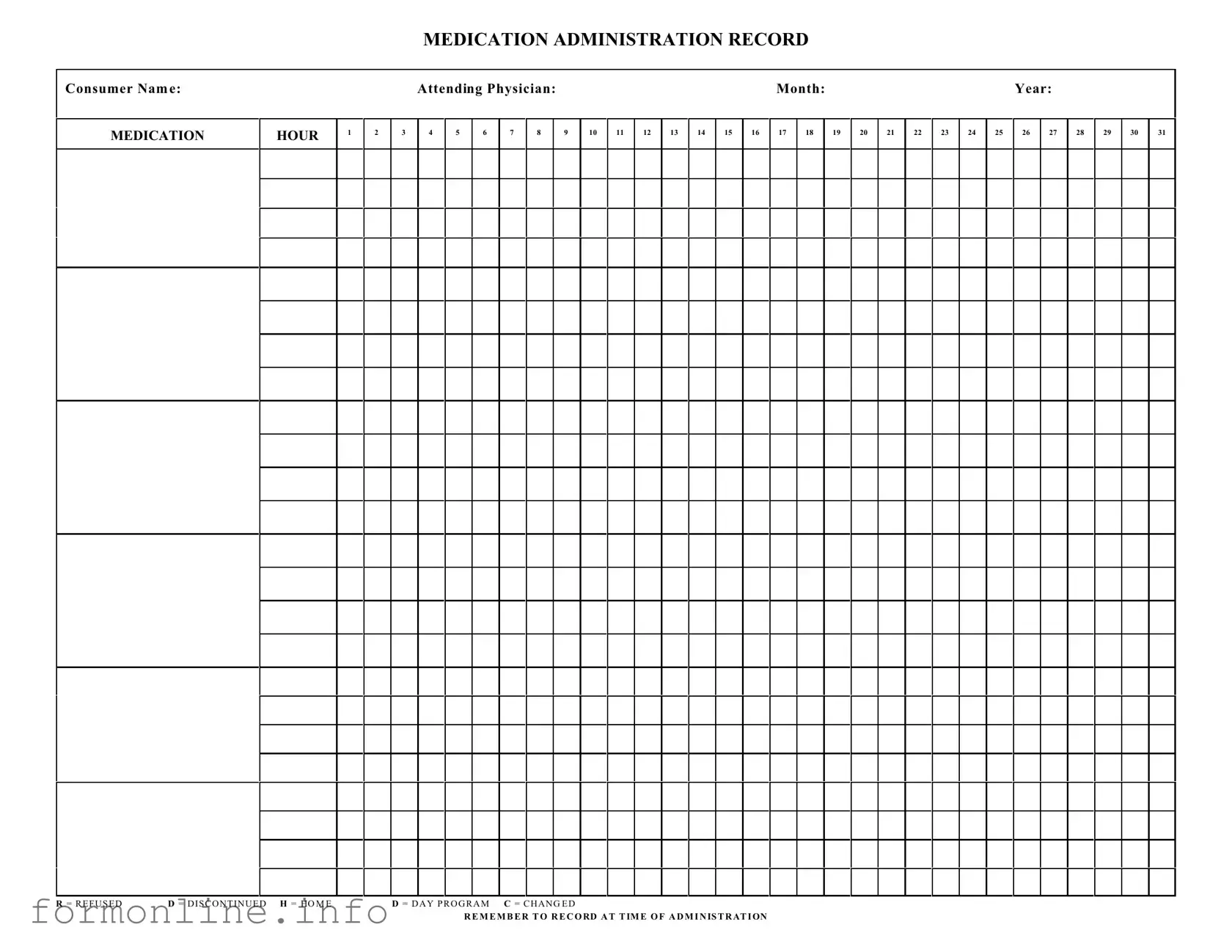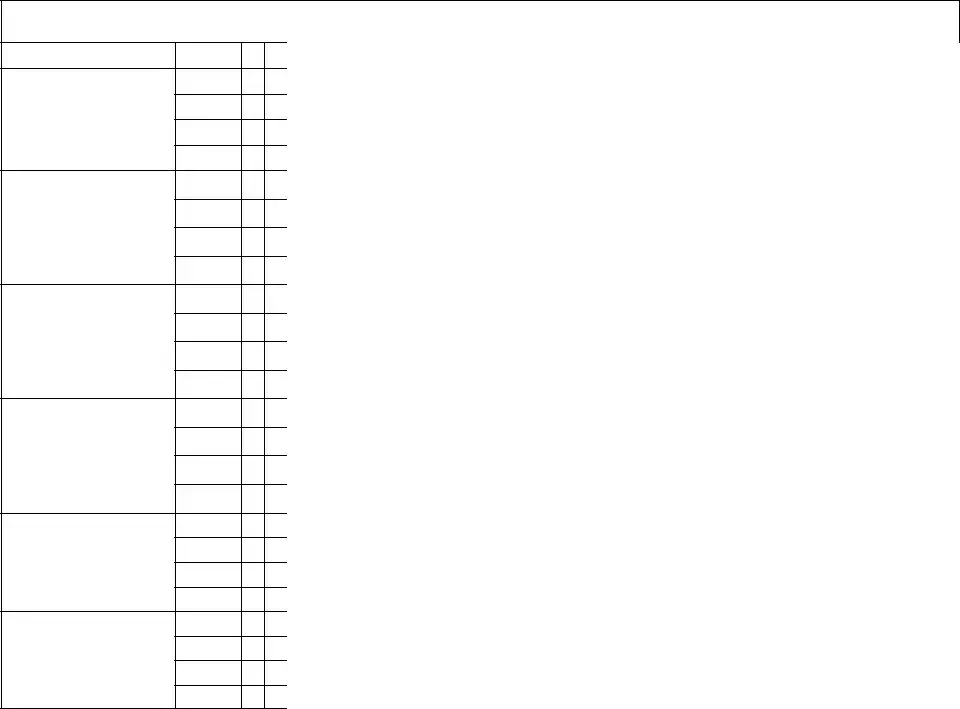The Medication Administration Record Sheet (MARS) serves as a crucial tool in the healthcare landscape, particularly in ensuring the safe and effective administration of medications to patients. This form captures essential information such as the consumer's name, the attending physician's details, and the specific month and year of medication administration. Each hour of the day is meticulously documented, allowing healthcare providers to track when medications are given. The form includes a comprehensive grid where healthcare professionals can record various statuses, including whether a medication was refused, discontinued, or changed. Such meticulous documentation is not merely a formality; it is a safeguard that promotes accountability and transparency in patient care. By recording the administration time accurately, providers can ensure that patients receive their medications as prescribed, thereby minimizing the risk of errors and enhancing overall treatment outcomes. Understanding the significance of the MARS is imperative for anyone involved in patient care, as it underpins the very foundation of medication management and patient safety.

